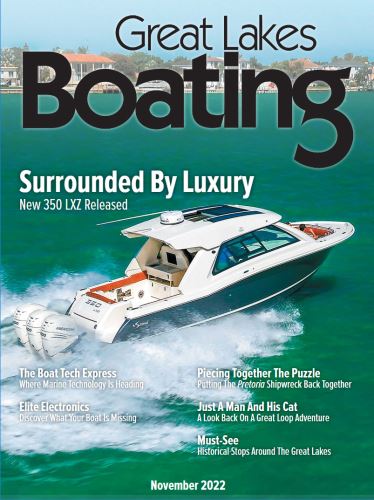.jpg_1600.jpg)
I suspect that all sailors have had those moments sailing when everything is in balance, the breeze is fair, the sun is nice and warm, the skies are blue and the crew is just enjoying the beautiful day. Then there are the nights when the breeze is perfect, the stars are bright in the sky and all is well. I recall one such night during a Mackinac Race several years ago when we were also treated to a few hours of the Northern Lights … a rare treat for those of us who sail Lake Erie. This is what sailing the Great Lakes is all about, after all.
The first sail of the year, for me, is typically a short solo adventure. Especially with these long winters, once I’ve finally gotten her out of storage and in the water, I just want to raise the main, unfurl the jib and get sailing.
This season, the first sail was a nice Saturday morning with the winds at a steady 12 to 14 knots, perfect for a spring shakedown sail. And maybe the best part was that, in addition to acting as skipper for the day, I was also the crew. In my way of thinking, sailing alone on a nice, quiet morning is the best way to go. There are also those sailors who think that sailing alone might just be about the only way to do it.
There’s A Club For That
The Great Lakes Singlehanded Society was established to promote the sport of solo sailing. To this end, the organization sponsors several solo races across the Great Lakes each year. These races are referred to as “challenges,” as the preparation and sailing are certainly different than racing with crew.
Membership in the Great Lakes Singlehanded Sailing Society is available only to those who successfully complete one of the solo challenges that they sponsor, and, to date, there are fewer than 300 skippers who can make that claim. When I read that on the GLSS website, it seemed incredible, but then again, these Great Lakes of ours can each be a little bit testy in their own ways with quickly changing weather systems.
The society sponsors or co-sponsors three types of races including “shorter” races of 50 to 100 nautical miles (nm), the solo challenges in each Great Lake of between 230 and 336 nm and the longer Super Mac races of 500 to 1,000 nm. In addition to the races offered, they offer safety seminars and their annual general meetings, which are open to non-members. These seminars are designed to educate sailors about shorthanded sailing and cover everything from clothing to provisioning to safety equipment and much more.
Eight Hours Is For Landlubbers
Probably one of the biggest issues in long distance solo sailing is the lack of sleep. I’ve had the opportunity to talk with a number of solo sailors from the Great Lakes and some who have done some around-the-globe solo sailing. It seems they all have a method of their own to address this problem. In any event, it seems that at some point in time the lack of sleep may play some tricks with the mind. One friend of mine, while competing in his first Lake Erie solo challenge a few years ago, told me that during one night out on the water he was surrounded by swimming cows. He knew he was hallucinating, but the cows were there nonetheless.
Another tells of a swinging line down below that looked like a woman cooking a meal. The mind does come up with some interesting things before being able to connect everything together. My mind seems to particularly enjoy Gregorian chants when doing long distance sailing.
It goes without saying, safety is a primary concern during the solo challenges. Equipment needs to be examined and assessed for compliance. Preparation is important as well. Food, clothing, boat systems and communication equipment need to be well thought out. Remember, the water temperatures in the upper Great Lakes are highly conducive to hypothermia.
On & Off The Water
The challenges go beyond the sport of solo sailing. They create friendships on the water and for years to come. The new or first-time challengers ask for advice, and it is readily provided by experienced participants. During the challenges, radio communication is encouraged among the sailors. It is a good time to discuss what was had for breakfast, weather changes, what worked and maybe did not during the last chute change.
So if you’re ready to join the club, the first thing to do is to look at the significant amount of detail on the website. The next might be to decide which one of the challenges will fit your schedule and location. Another is to take a closer look at your boat and equipment to see what changes and/or additions may need to be made. Then get out and do the required solo passage. This is a documented sail of at least 100 miles and passage time of 24 hours which must be completed prior to entry acceptance for one of the challenges.
Single-handed sailing may not be for everyone, and single-handed distance racing is certainly for even fewer. The competitors with whom I have talked — without exception — have said that the completion of the challenge and the friends made is much more important than the race itself. Whether your sailing is solo or with family and friends, the most import thing to do is just get out on the water and sail our Great Lakes.
For More Information:
Great Lakes Singlehanded Society
www.solosailors.org

